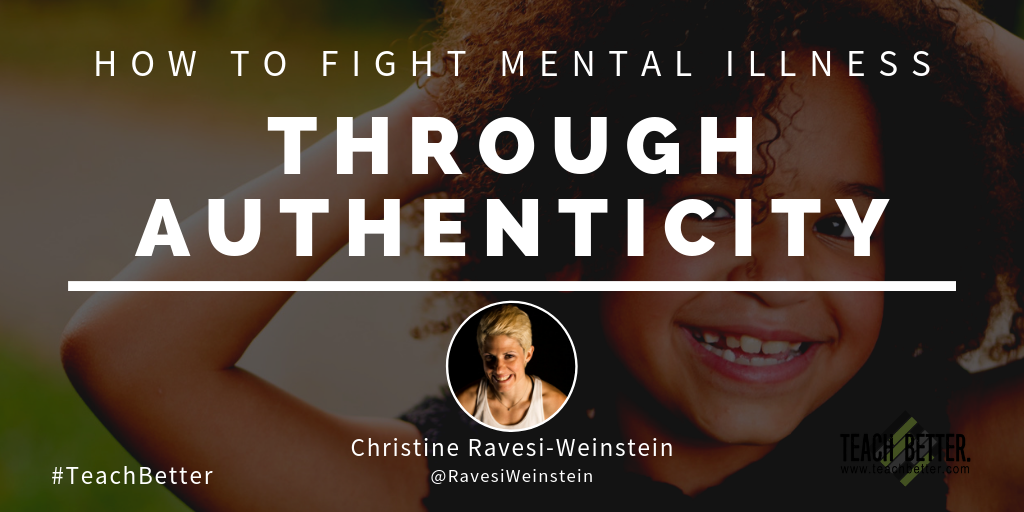In This Post:
- Authenticity is a growing necessity in education, for both teachers and students.
- A job may be just a job, but teaching is more than that; it’s a work of love and sacrifice.
- Although there are certain things we must temper when we are in front of our students, the inherent qualities that define who we are must be conspicuous and unchanged.
- The foundations of authenticity are compassion, patience, positivity, and humor.
- Positive relationships and authenticity give students cause to be authentic in return.
If we are only who we are when no one is looking, then every student, every individual, has a story to tell. Authenticity is a growing necessity in education, for both teachers and students. For students, authenticity is about finding their voice and creating relevancy; how students can demonstrate what they’ve learned in a manner more realistic to the world outside of the classroom.
For teachers, authenticity is about building positive relationships with students: creating student buy-in and communicating a care for students that together, like concrete, will mix to form the foundation of learning. Students care about learning when they know their teachers care about them. But knowing you are cared for goes far beyond the simplicity of a title. Every teacher is expected to inherently care about the success of his/her students; why else get into the profession? But why a teacher cares is at the heart of authenticity.
Positive relationships and authenticity give students cause to be authentic in return. Click To TweetMy high school math teacher was a legend; he won National Teacher of the Year, and taught well into his 80s. He had a way of teaching that went beyond the curriculum, he taught about life lessons and growth. He challenged his students to dig deep; consider perspectives that were cerebral and far bigger than any one individual. As a result of being placed into the accelerated math program, I was fortunate to have him as a teacher for four years. During that time, he had a quote that hung on the wall just above his whiteboard; a quote that I stared at everyday for 720 days: You’re only who you are when no one is looking.
A job may be just a job, but teaching is more than that; it’s a work of love and sacrifice. The most authentic teachers are those who are true to themselves whenever they are with their students. As true as the quote on the wall of my math teacher’s classroom might be, it must be modified if teachers are going to be authentic and successful: You’re only who you are when no one is looking, or when a classroom of students is.
[scroll down to keep reading]
Although there are certain things we must temper when we are in front of our students; our language, the degree to which we share things about our personal lives, our political viewpoints, the inherent qualities that define who we are must be conspicuous and unchanged.
The foundations of authenticity are:
- Compassion: If we were all graded on bike riding after our first attempt, we would all fail and it’s unlikely any of us would try again. Learning to ride a bike takes practice, and sometimes we are too busy to make the time to do so. But the goal is to learn to ride eventually, not to do so in two days. So, if the goal in the classroom is to meet the content standard, why worry about when it is met? Understanding that there is far more to life than your classroom will help increase your flexibility with students when it comes to due dates and deadlines.
- Patience: Patience is a virtue. Many people are uncomfortable with unresolved issues, open-ended deadlines, or having to wait to be helped. Additionally, a students’ inability to meet our expectations can be infuriating. But just as the curriculum is best discovered through trial, error, revision, and retesting, so, too, is life. Students aren’t always going to get it right the first time. Whether it’s identifying words that rhyme, solving two perfect squares, or passing in an essay using Google Classroom, students grow and succeed only when given the time and space to do so; teacher patience creates such an authentic environment.
- Positivity: Just as negativity is contagious, so is positivity. Life is going to throw a lot of curveballs, they’re the things that make up the majority of your “to-do” lists. It’s so easy to focus on the negative, but it’s more powerful to focus on the positive. A smile, a pat on the back, a simple acknowledgement of hard work can all go a long way with student productivity. Furthermore, an approach like this will be infectious and motivate students to want to work for their teacher because he/she knows the teacher cares about him/her, not just because he/she wants a good grade.
- Humor: It’s been said that laughter is the best medicine. The endorphins that are released during laughter are similar to those released during exercise. Endorphins are “feel-good” chemicals in the brain. Using humor in the classroom can pay large dividends, not just in the long term with student success, but also in the short term by providing a balance of chemicals so as to alleviate the negative symptoms of low concentrations of endorphins in the body. Moreover, humor brings people together and shows real authenticity in the classroom.
The foundations of authenticity create a safe and productive learning environment for all students, but even more so for those suffering from anxiety. Students with anxiety often feel disconnected from the other people in their lives, especially adults. The more these students try to negotiate with their anxiety, the more they disappoint themselves and others. Anxiety will always win until, or unless, the adults in these students’ lives actively break down the walls for them.
One of the most powerful ways educators can do this is by building positive relationships with their students, i.e., through authenticity. When students feel they can trust or connect with adults, they are more likely to feel cared for, and the positive relationships established with students suffering from mental illness play an even bigger role. These relationships build the groundwork for mental health advocacy. Being a mental health advocate does not require the educator to suffer from mental illness. Rather, it calls only for the creation of a safe place for these students, to stand up for them, and to be authentic.
Students with mental illness neither need to be given exceptions nor do they need to be held to lower standards. Anxiety sufferers do, however, need educators who are compassionate, patient, positive and humorous. If students with mental illness only feel like they can be who they are when no one is looking, then they need examples of educators being who they are when others are looking.
Positive relationships and authenticity give students cause to be authentic in return. When this happens, students will be able to fight their mental illness in hopes of being successful both in the classroom and in life.
About Christine Ravesi-Weinstein
Christine Ravesi-Weinstein currently serves as a high school Assistant Principal. She previously served as a high school science department chair for four years and classroom teacher for 15 years. She is an avid writer and educator and is passionate about bridging the two with her advocacy for mental health.
Subscribe to Christine’s YouTube Channel.
Check Out Christine’s Other Work.
Learn More About Christine’s Story.
Top header image photo by Eye for Ebony on Unsplash.



